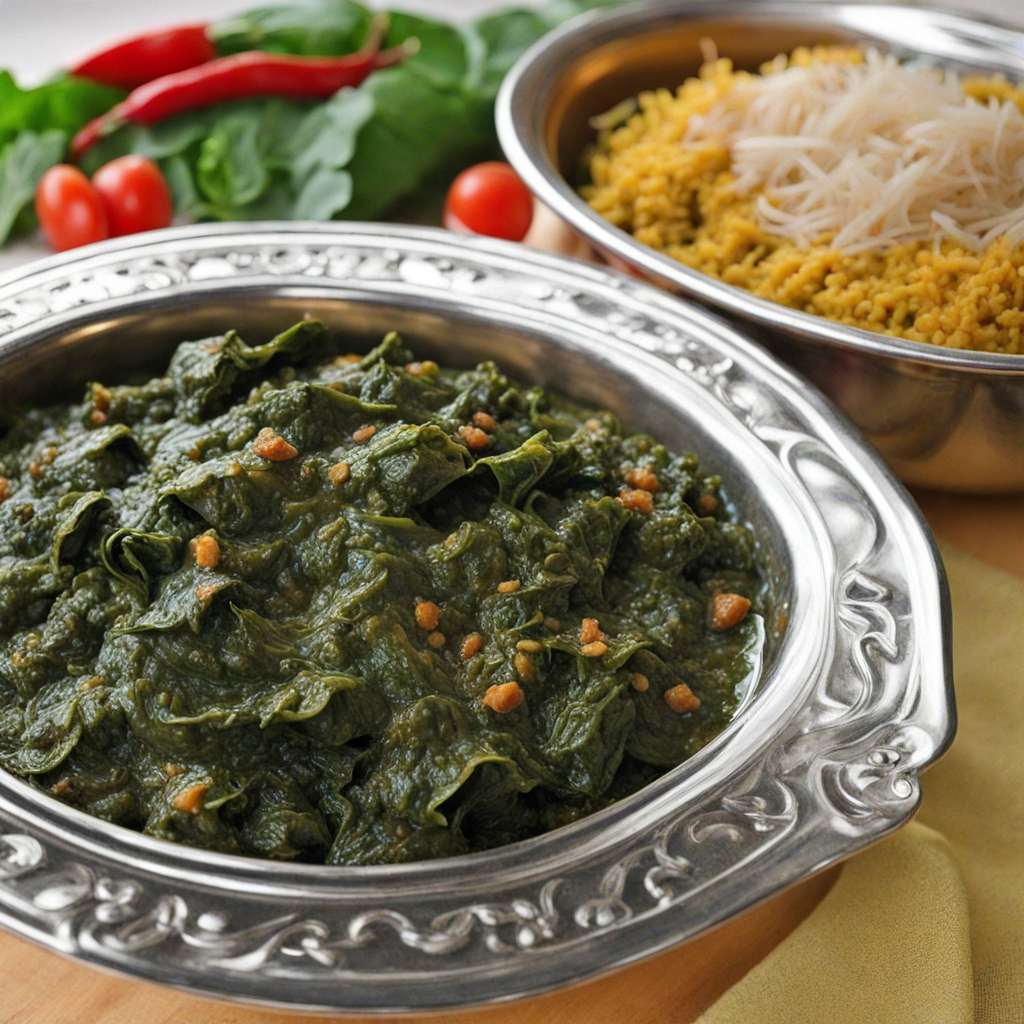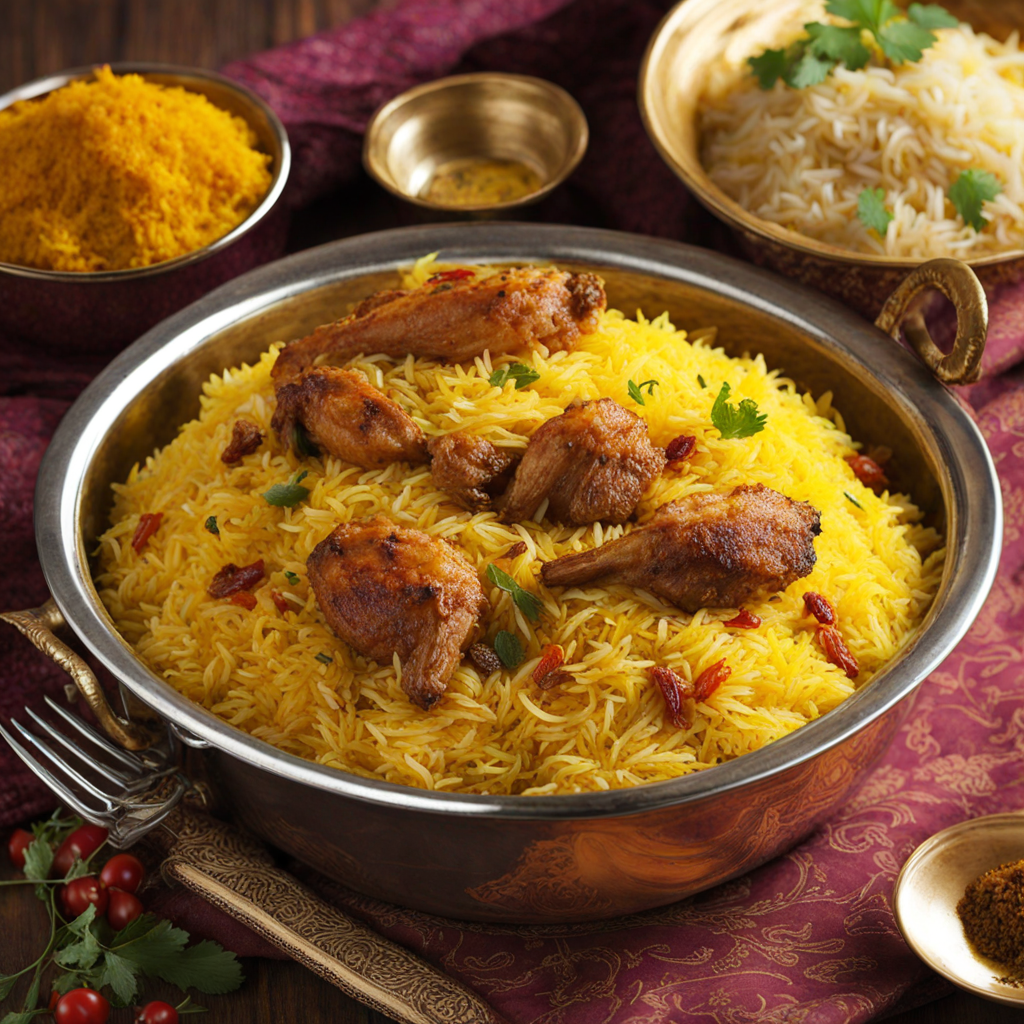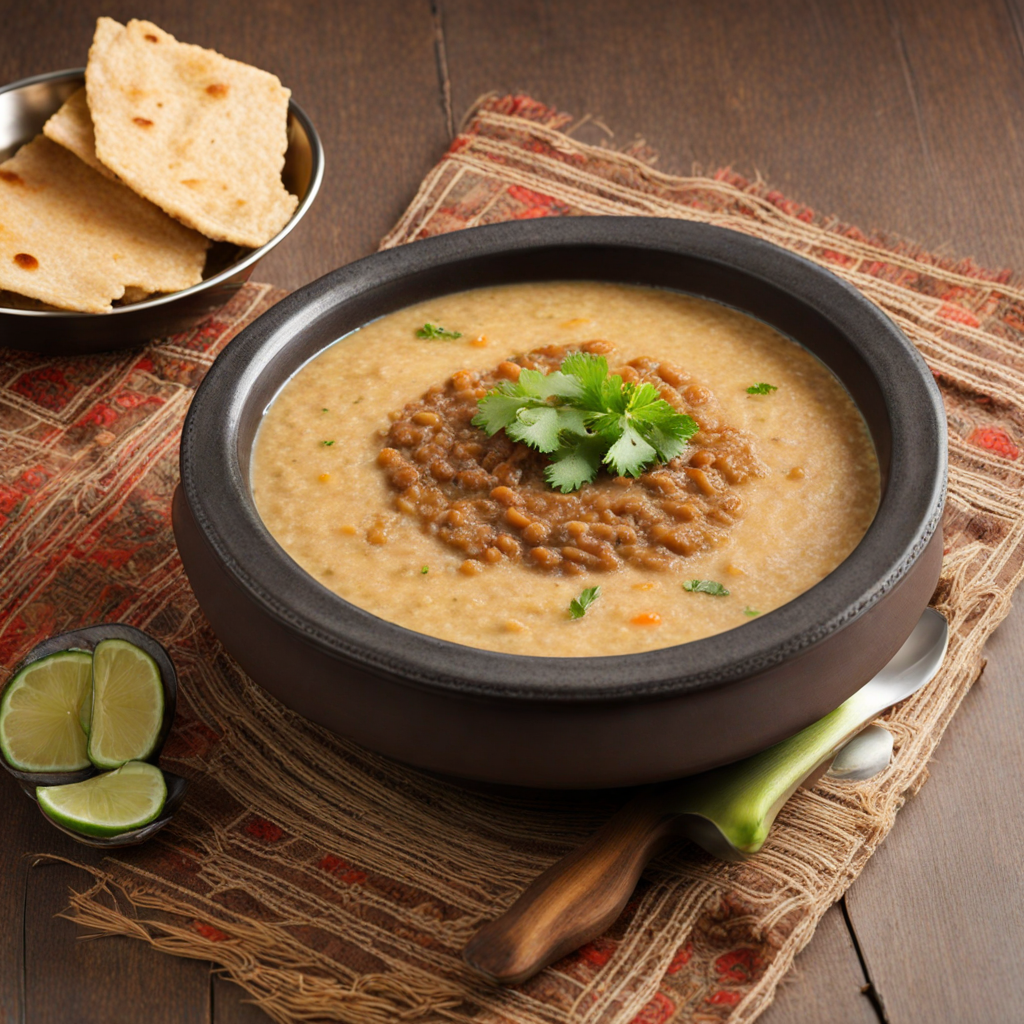Saag
Saag, a beloved dish originating from the Punjab region of Pakistan and India, is a leafy green preparation that showcases the rich agricultural heritage of the area. Traditionally, saag is made from a variety of greens, most commonly mustard greens (sarson), but it can also include spinach, fenugreek, and other seasonal greens. This dish is not just a culinary staple; it is also a symbol of the rural lifestyle in Punjab, where it is often enjoyed during the winter months when these leafy greens are at their peak. The history of saag is deeply intertwined with the culture of Punjab. It is often associated with the agrarian lifestyle, where fresh produce is harvested and cooked in simple yet flavorful ways. Saag has been a source of nourishment for generations, embodying the essence of traditional Punjabi cuisine that emphasizes the use of local ingredients. The dish gained prominence during the colonial period, as it was featured in the kitchens of both peasants and aristocrats, becoming a common delight across social classes. The flavor profile of saag is robust and earthy, characterized by its slightly bitter and mustardy notes from the mustard greens. When cooked, the greens become tender and meld together, creating a harmonious blend that can be both comforting and invigorating. The richness of the dish is often enhanced by the addition of dairy, such as ghee or butter, which adds a creamy texture and depth of flavor. Spices like cumin, coriander, and garam masala are typically used to elevate the
How It Became This Dish
The History of ساگ (Saag) in Pakistan Saag, a beloved dish in Pakistan, particularly in the Punjab region, is more than just a culinary delight; it is a symbol of cultural identity, agricultural heritage, and communal traditions. The term "saag" refers to a variety of leafy greens, commonly mustard greens (sarson), as well as other greens like spinach (palak) and fenugreek (methi). The dish is typically prepared by cooking these greens with spices and is often enjoyed with makki di roti (cornflatbread) and a dollop of butter or ghee. To understand the significance of saag in Pakistani culture, we must explore its origins, cultural importance, and its evolution through time. #### Origins of Saag The roots of saag can be traced back to ancient agricultural practices in the Indian subcontinent, where leafy greens have been cultivated for thousands of years. The fertile plains of Punjab, nourished by the Indus River, created an ideal environment for the cultivation of mustard greens, which are staples in Punjabi cuisine. Historical texts and archaeological evidence indicate that mustard plants were being used in cooking as far back as 3000 BCE. Mustard greens, known for their robust flavor and nutritional value, became a staple food for rural communities. They thrived in the colder months, making them a vital source of sustenance during the winter season when other vegetables were scarce. The seasonal nature of saag also reflects the agricultural calendar of the region, marking the harvest and celebration of rural life. #### Cultural Significance In Pakistan, saag is more than just a dish; it embodies the spirit of Punjab’s agricultural society. The preparation and consumption of saag are often communal activities, bringing families and communities together. Traditionally, saag is associated with the winter months, particularly around the harvest festival of Lohri, when people celebrate the end of the winter solstice and the onset of the harvest season. During this time, saag is prominently featured in festive meals, emphasizing its role in cultural celebrations. Saag also holds a special place in the heart of Punjabi folklore and literature. It is often immortalized in folk songs and poetry, reflecting the region's deep connection to the land and its produce. The dish symbolizes warmth, comfort, and home, often seen as a comfort food that nourishes not just the body but also the soul. #### Nutritional Value and Culinary Techniques The nutritional profile of saag is another reason for its significance in Punjabi cuisine. Rich in vitamins A, C, and K, as well as iron and calcium, saag is a healthful addition to any diet. The cooking techniques used to prepare saag vary from household to household, often passed down through generations. Traditional methods involve slow-cooking the greens with spices like cumin, garlic, and ginger, allowing the flavors to meld together beautifully. A particularly popular way to enjoy saag is through "sarson da saag," which involves using mustard greens. The mustard greens are typically cooked down until tender and creamy, then seasoned with a blend of spices. The dish is often served with makki di roti, a corn-based flatbread that complements the rich, earthy flavors of the saag. The combination of saag and makki di roti is considered a quintessential Punjabi meal, embodying the region's agricultural bounty. #### Evolution Over Time As Pakistan underwent significant social and political changes in the 20th century, so too did the culinary landscape. The partition of India in 1947 brought with it a wave of migration and cultural exchange that influenced the way saag was prepared and consumed. Many families brought their recipes and cooking techniques with them, leading to a fusion of flavors and styles. In urban areas, saag began to be served in restaurants, moving from a rural staple to an urban delicacy. In contemporary times, saag has transcended its humble origins to become a symbol of Pakistani identity. It has found its place in the global culinary scene, introduced to international audiences through Pakistani diaspora communities. Chefs and food enthusiasts around the world have embraced saag, experimenting with new ingredients and fusion dishes while maintaining the essence of traditional recipes. The rise of organic farming and a renewed interest in healthy eating have also contributed to the resurgence of saag in modern diets. As consumers become more aware of the benefits of incorporating greens into their meals, saag has regained popularity, not just as a traditional dish but as a nutritious option that aligns with contemporary health trends. #### Saag in Popular Culture In addition to its culinary significance, saag has permeated popular culture in Pakistan. It is often featured in television dramas and films, symbolizing the simplicity and richness of rural life. The dish evokes nostalgia and a sense of belonging, reminding viewers of their roots and the agrarian lifestyle that many still cherish. Moreover, saag has been embraced by food festivals and culinary events, where chefs showcase their interpretations of this classic dish. These events celebrate traditional recipes while encouraging innovation, ensuring that saag continues to evolve while honoring its rich history. #### Conclusion Saag is more than just a dish; it is a reflection of the agricultural heritage, cultural identity, and communal bonds of Pakistani society. From its ancient origins in the fertile plains of Punjab to its place in contemporary cuisine, saag has stood the test of time, adapting to changes while retaining its core significance. Whether enjoyed in a rustic kitchen or a modern restaurant, saag remains a beloved dish that nourishes both body and spirit, connecting generations and communities through its simple yet profound flavors. As it continues to evolve in the global culinary landscape, saag stands as a testament to the enduring power of food as a cultural cornerstone.
You may like
Discover local flavors from Pakistan







